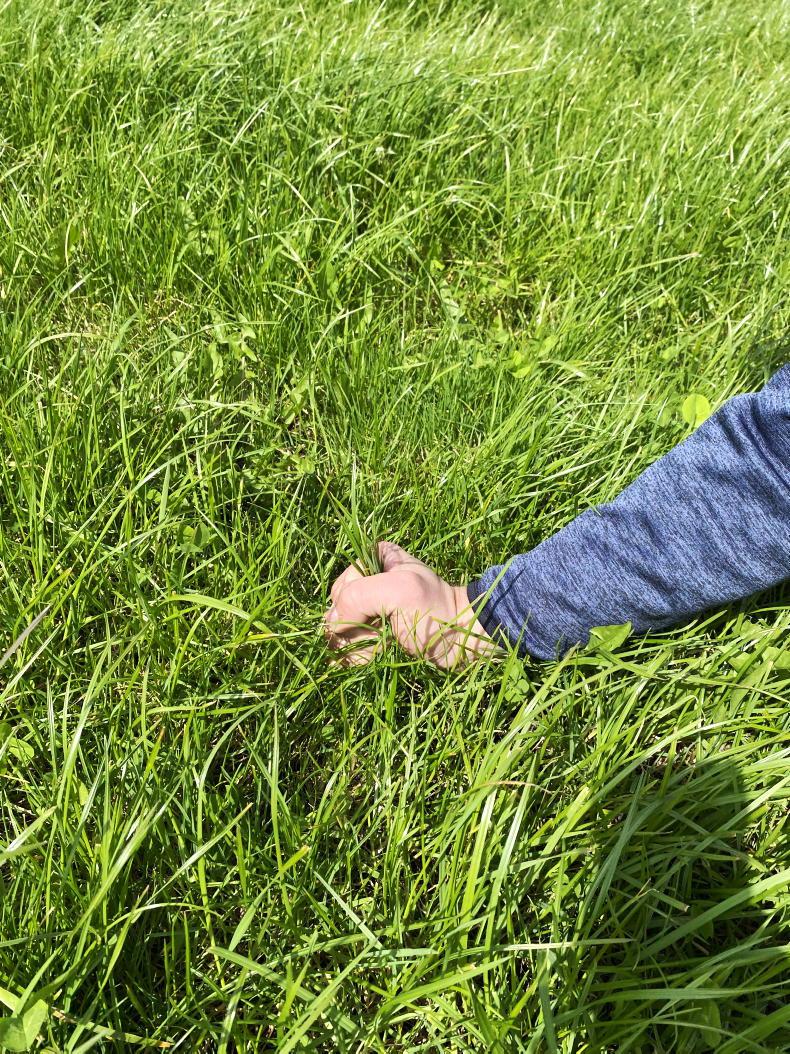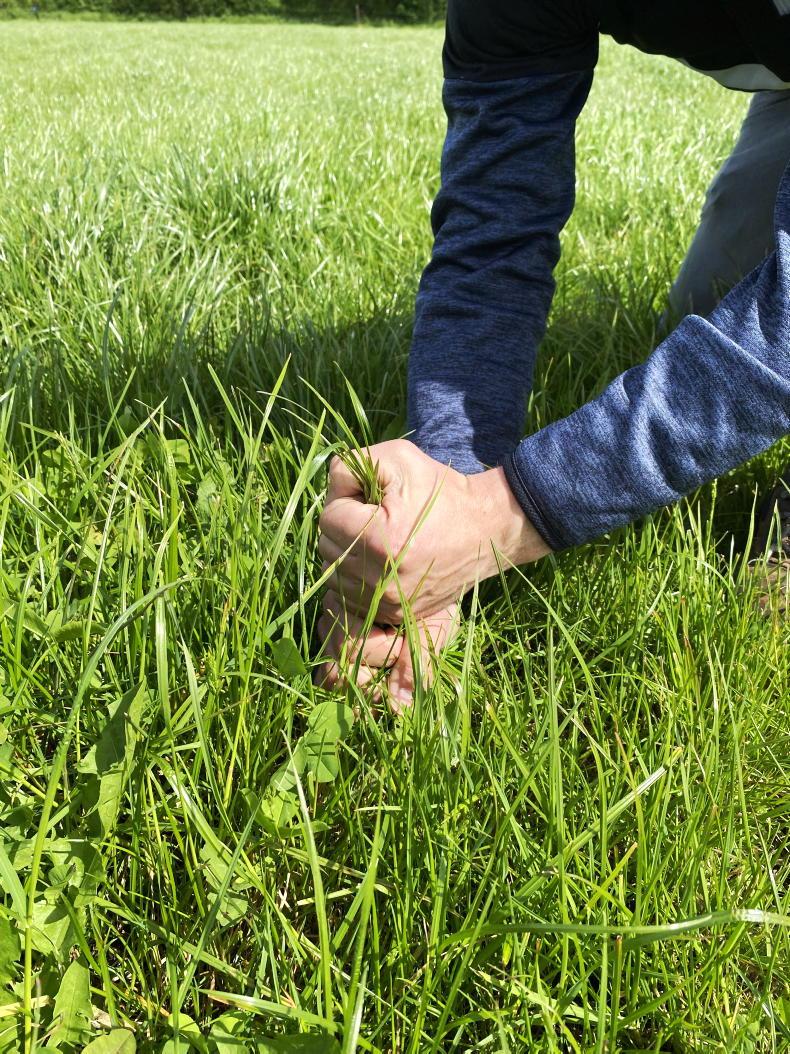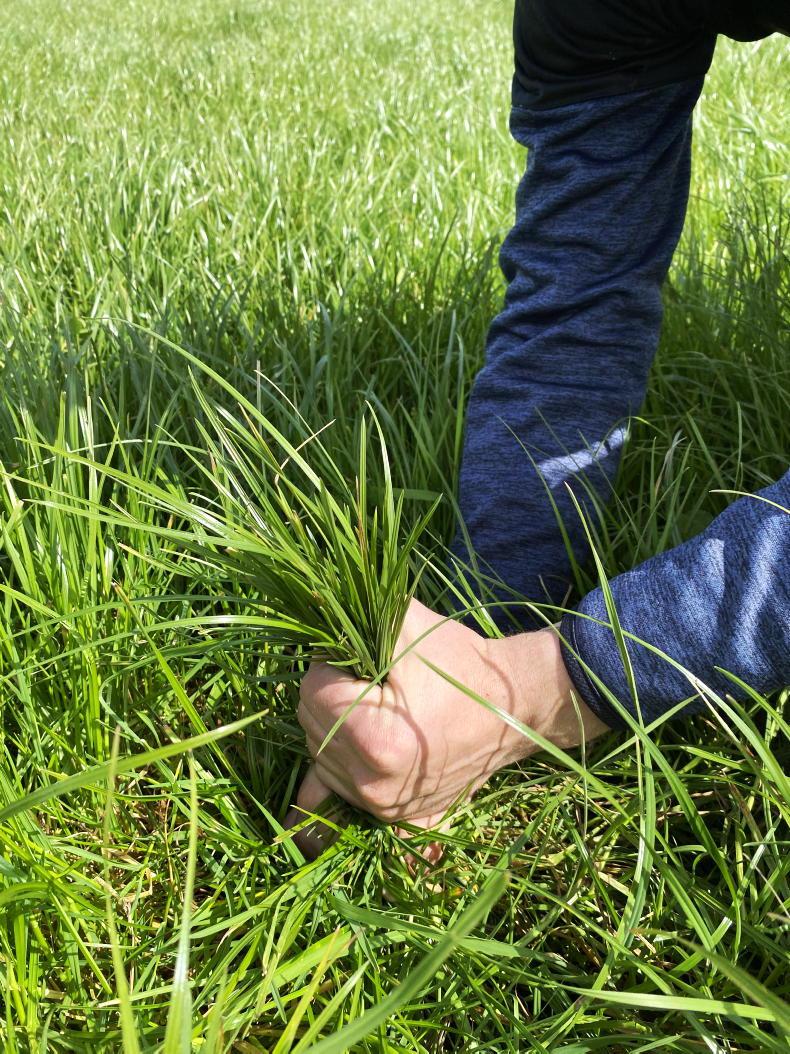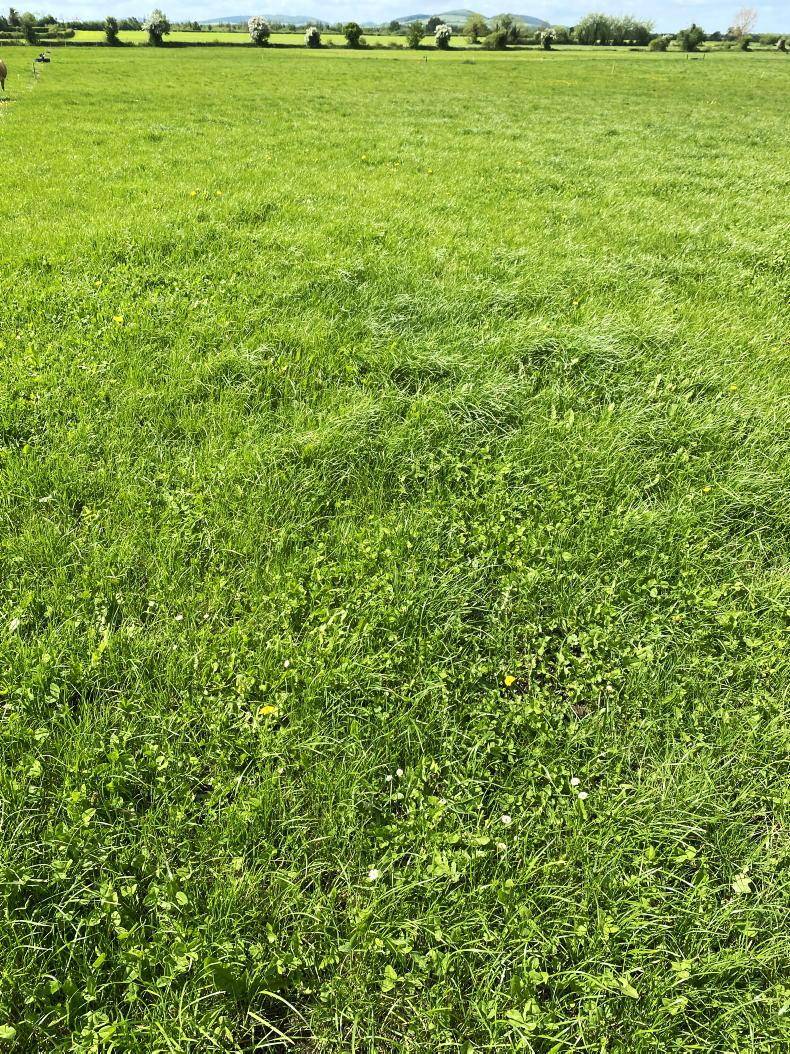With good grazing infrastructure in place, Andrew Mulhare is looking to maximise his utilisation of grass while keeping the system simple and labour efficient.
Andrew typically runs three groups of stock during the grazing period; cows with bull calves at foot, cows with heifer calves at foot and maiden heifers. With autumn calving on-farm, it is necessary to split strong bull calves away from the heifers.
Each group of cows has a block of eight paddocks to graze from, with each paddock being 1ha (2.5ac) in size, along with a centrally located trough servicing four paddocks. Cows typically spend three days in each paddock, with a 21-day rotation length.
Andrew wants to keep the system simple while improving his grassland management. He does not wish to be mowing out paddocks regularly. Due to the high grass growth recently, a 21-day rotation length has resulted in cows entering strong covers, which they are struggling to graze out properly. This is also causing cows to spend up to four days in a paddock, further extending the rotation length.
An option that Andrew will now explore in periods of high growth will be to remove a paddock for long-term silage, which will be mowed out alongside first-cut silage. In doing this, rotation length is pulled back to 18 days.
Three days of grass growth when covers are heavy can be between 300-400kg DM/ha, so by shortening the rotation Andrew’s pre-grazing cover will go from 1,700-1,800kg DM/ha back down to 1,400-1,500kg DM/ha.
Grass measuring
Andrew does not want to go down the route of grass measuring just yet, but wishes to gain a better knowledge of which paddocks are performing well and which paddocks may require attention. A simple way to do this is to print off a map of the farm (e.g BPS maps) and sketch out paddocks on-farm.
Every time a paddock is grazed, Andrew will place a tick on the paddock map. At the end of the year, the amount of ticks will show the amount of times the paddock was grazed, with the target being 10 grazings per paddock. Soil sample results of the paddocks with a low amount of grazings will be examined and paddocks will possibly be reseeded.
To better understand what covers his cows are going in to, Andrew will be using the three-fist method of measuring; one fist is estimated to be 500kg DM/ha, two fists are 1,000kg DM/ha and three fists are 1,500kg DM/ha.

One fist of grass = 500kg DM.

Two fists of grass =1,000kg DM.

Three fists of grass =1,500kg DM.
It’s a basic system for measuring grass and it does not take an accurate measurement of dry matter content, but is a good way to begin measuring.
Andrew has also committed to walking the entire farm more frequently and assessing farm cover, to allow him to make better choices on his grassland management.
Clover
To date only 20 units of chemical N per acre have been applied, which was spread on paddocks back in mid-March. Many of Andrew’s paddocks have a high clover content, which he is keen to encourage.
When carrying out clover distribution assessments in the spring, many of Andrew’s paddocks had 90% clover distribution.
This means that there was clover, whether in big or small amounts, in 90% of the field.

No chemical N has been applied since mid-March, with clover in the sward fixing nitrogen.
To encourage and keep the clover in the sward, Andrew is going to target good graze outs, spot spraying of weeds as opposed to boom spraying and applying low amounts of N on high clover paddocks.
The plan going forward is to spread no more than 10 units of N per acre per round on high clover swards.
With good grazing infrastructure in place, Andrew Mulhare is looking to maximise his utilisation of grass while keeping the system simple and labour efficient.
Andrew typically runs three groups of stock during the grazing period; cows with bull calves at foot, cows with heifer calves at foot and maiden heifers. With autumn calving on-farm, it is necessary to split strong bull calves away from the heifers.
Each group of cows has a block of eight paddocks to graze from, with each paddock being 1ha (2.5ac) in size, along with a centrally located trough servicing four paddocks. Cows typically spend three days in each paddock, with a 21-day rotation length.
Andrew wants to keep the system simple while improving his grassland management. He does not wish to be mowing out paddocks regularly. Due to the high grass growth recently, a 21-day rotation length has resulted in cows entering strong covers, which they are struggling to graze out properly. This is also causing cows to spend up to four days in a paddock, further extending the rotation length.
An option that Andrew will now explore in periods of high growth will be to remove a paddock for long-term silage, which will be mowed out alongside first-cut silage. In doing this, rotation length is pulled back to 18 days.
Three days of grass growth when covers are heavy can be between 300-400kg DM/ha, so by shortening the rotation Andrew’s pre-grazing cover will go from 1,700-1,800kg DM/ha back down to 1,400-1,500kg DM/ha.
Grass measuring
Andrew does not want to go down the route of grass measuring just yet, but wishes to gain a better knowledge of which paddocks are performing well and which paddocks may require attention. A simple way to do this is to print off a map of the farm (e.g BPS maps) and sketch out paddocks on-farm.
Every time a paddock is grazed, Andrew will place a tick on the paddock map. At the end of the year, the amount of ticks will show the amount of times the paddock was grazed, with the target being 10 grazings per paddock. Soil sample results of the paddocks with a low amount of grazings will be examined and paddocks will possibly be reseeded.
To better understand what covers his cows are going in to, Andrew will be using the three-fist method of measuring; one fist is estimated to be 500kg DM/ha, two fists are 1,000kg DM/ha and three fists are 1,500kg DM/ha.

One fist of grass = 500kg DM.

Two fists of grass =1,000kg DM.

Three fists of grass =1,500kg DM.
It’s a basic system for measuring grass and it does not take an accurate measurement of dry matter content, but is a good way to begin measuring.
Andrew has also committed to walking the entire farm more frequently and assessing farm cover, to allow him to make better choices on his grassland management.
Clover
To date only 20 units of chemical N per acre have been applied, which was spread on paddocks back in mid-March. Many of Andrew’s paddocks have a high clover content, which he is keen to encourage.
When carrying out clover distribution assessments in the spring, many of Andrew’s paddocks had 90% clover distribution.
This means that there was clover, whether in big or small amounts, in 90% of the field.

No chemical N has been applied since mid-March, with clover in the sward fixing nitrogen.
To encourage and keep the clover in the sward, Andrew is going to target good graze outs, spot spraying of weeds as opposed to boom spraying and applying low amounts of N on high clover paddocks.
The plan going forward is to spread no more than 10 units of N per acre per round on high clover swards.










 This is a subscriber-only article
This is a subscriber-only article










SHARING OPTIONS: